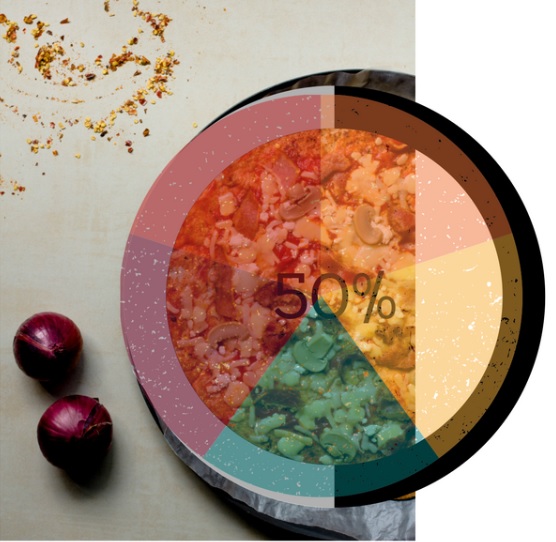A study from McKinsey states that data-driven companies have a 23-fold increased possibility of client acquisition and a 6-fold increased possibility of customer retention.
A couple of blogs posts ago we had talked of how data was fast becoming a very critical component in a restaurant’s kitchen. Know how data-driven decision-making is reshaping the restaurant industry.
Bloomberg Gadfly columnist Shelly Banjo, who covers retail and consumer goods, recently wrote a column on how almost all the big restaurant chains in the United States had reported a drop in sales in Q2, 2016, hinting at an industry downturn.
While we are not getting into the reasons behind the “recession”, there were some points in Shelly’s column that caught our attention, underlining what we have been saying for a while now – analytics was helping quick-service restaurants (QSR) to not only stay afloat but also be ahead of the competition.
Shelly observed that pizza chains, unlike most of the other restaurant chains, had bucked the downward trend. Why? Because, they had been quick to “adapt to changing technologies”, realizing the only thing more important to strapped consumers than the price was convenience. She wrote:
The laziest of customers can now order a pizza without ever getting off the couch, whether by sending a pizza emoji on Twitter, relaying an order via their car operating system, or using Amazon’s voice-controlled Echo speaker. (Alexa, get me a cheese pizza with mushrooms.)
The columnist used Domino’s as an example of this “digital charge”. Shelly pointed out that this pizza chain had managed to rake in half of its US sales through “digital ordering”, up from a third in 2012.
Digital ordering lets Domino’s better target offers to customers and serve a greater variety of items. It helps Domino’s get accurate orders and keep labor costs low.
Our experts are on standby if you want to know more about data-driven decision making for restaurant industry and how data analytics can help. Speak to Our Experts, they will help you.
Did you grab that? No, not the pizza but the keywords, digital ordering, customer targeting, and accurate ordering. Domino’s, like some of the other QSR players including McDonald’s, has understood the value of data analytics in restaurants, applying it successfully to its marketing/sales strategy.
Domino’s has always pushed its brand using developing tech, so much so that today, it’s possible to order this brand of pizza from social networks, from car entertainment systems such as Ford’s Synch, and even from smartwatches.
Download Free e-Book to Understand the Use Of Analytics In QSRs
This article in Forbes, for example, talks of ‘Domino’s AnyWare’, the need to keep a Domino’s order button at the fingertips of their customers at all times. This multi-channel approach also leads to the generation and capturing of enormous amounts of data – which the pizza chain then uses to improve the efficiency of its marketing.
Information collected through the group’s point of sales systems and enrichment data adds up to 85,000 data sources, both structured and unstructured, pouring into the system every day.
Here are some of the things that Domino’s actually does with all this data (and so can you) – based on statistical modeling of customers:
- It presents them with different coupons and product offers
- Each store, using the customer segmentation data, can also customize its coupon, tailor-made to its own neighborhood customers
Domino’s is but an illustrative example to show you how big restaurant chains, and now, even some medium-sized ones, have taken to data analytics to segment customers to understand and even predict their needs.
Data analysts can now easily customize menus for different times of the day. Restaurants can also now analyze menus to establish the most popular (fast-moving) dishes or customize coupons for their favorite (repeat) customers.
Industry analysts have claimed that implementing advanced analytics in the restaurant business leads to a 3:1 return on investment.
But this powerful tool is no longer exclusively available only for the “biggies”. Even if you are running a small to medium QSR, you can deploy data analytics and see your customer order, and satisfaction, grow within a few months. Ask us how.
An Engine That Drives Customer Intelligence
Oyster is not just a customer data platform (CDP). It is the world’s first customer insights platform (CIP). Why? At its core is your customer. Oyster is a “data unifying software.”
Liked This Article?
Gain more insights, case studies, information on our product, customer data platform


No comments yet.